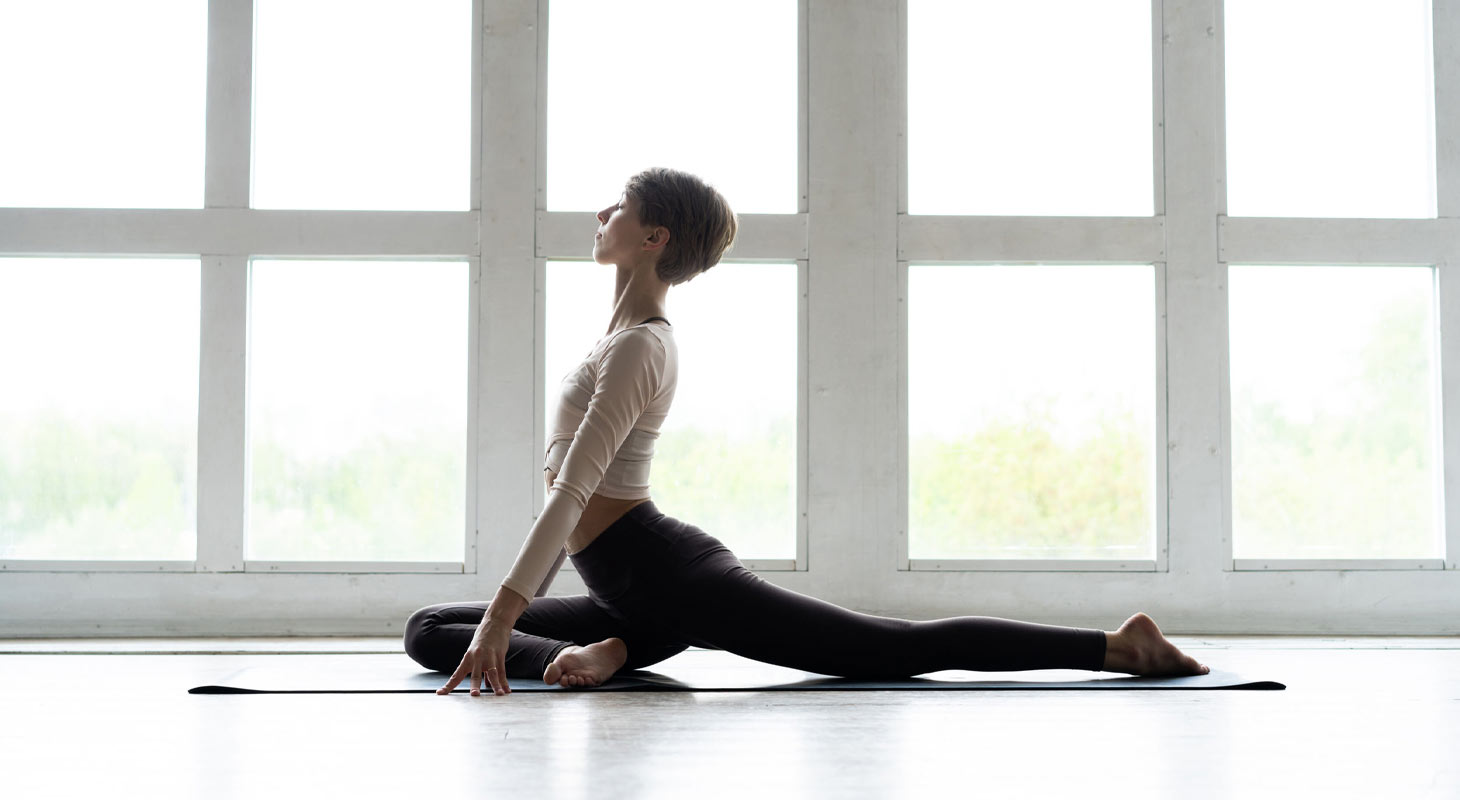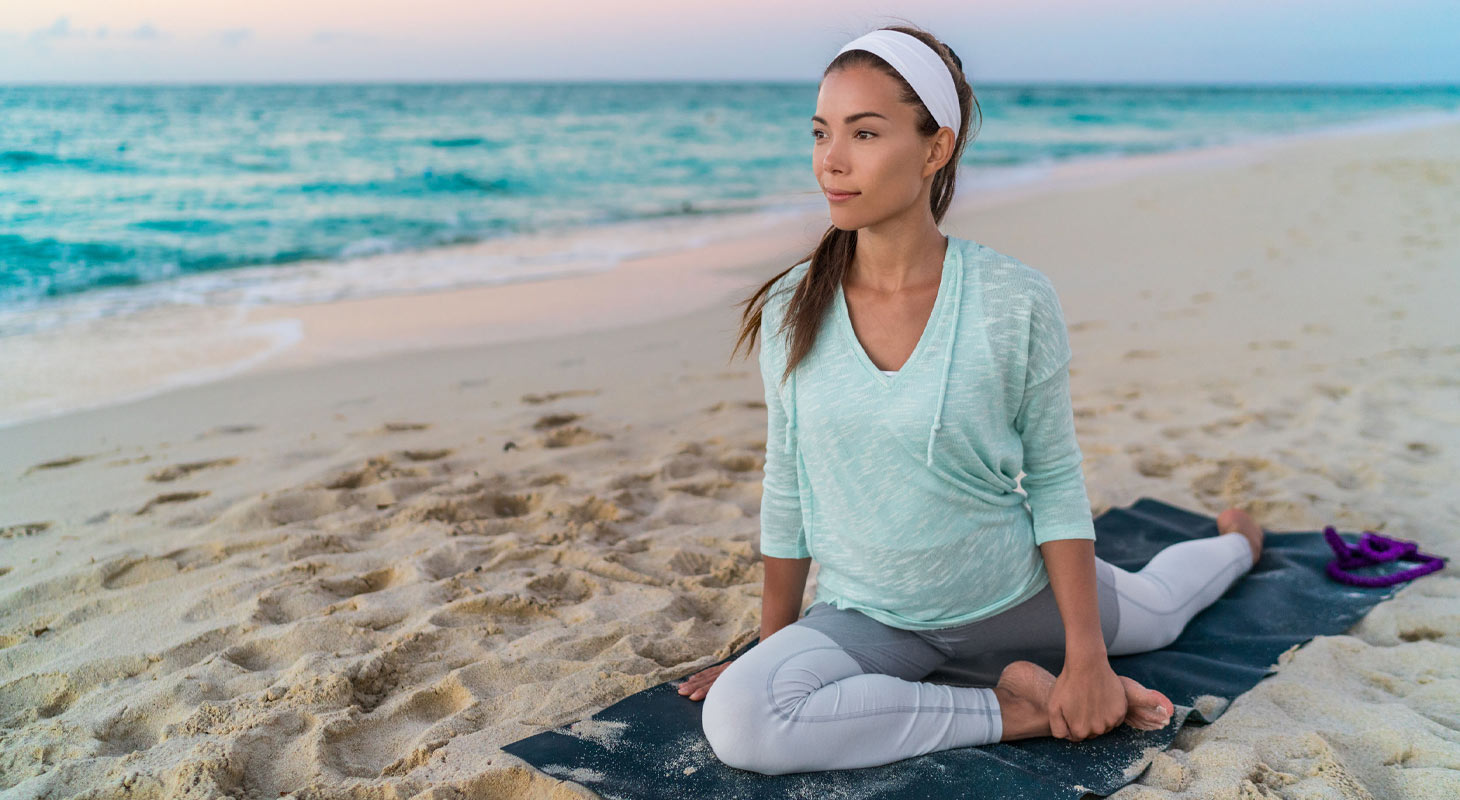Pigeon yoga
The pigeon posture, also called in Sanskrit eka pada rajakapotsana, is commonly practiced in yoga as we know it and is suitable for beginners. It allows a stretching of the whole body, especially the hips and flexor muscles.
Benefits of the Pigeon's Posture
The pigeon posture has, like many other positions in yoga, various benefits. We can quote among others:
- The global stretching of the body, especially the hips, flexor muscles, shoulders and neck.
- A stretching of the spine and thus the relief of sciatic or lumbar pain. It is regularly practiced by people who suffer from chronic low back pain.
- Stimulation of the internal organs.
- The reduction of fatigue and the emergence of a certain form of vitality and energy.

Why is it so important to soften your hips?
If you wish to maintain your body and its youthfulness
The hips are directly connected to the pelvis and the pelvic floor. It is therefore a particularly important area, and one where many stresses are exerted. It is also the zone, according to various spiritual practices, where our vital energy is created. And for good reason, it is in this zone that life is created in a woman's body!
Thus, the more flexible and open your hips are, the more your body will remain young and possess a vital momentum. Babies have particularly supple hips, but unfortunately this is lost over time. Yoga, and more particularly this posture of the pigeon, will allow to soften the hips, and to support the birth of the vital energy which crosses this key zone.
In order to stand upright when you are sitting
As you can see, the more your hips are open, the better your posture will be. Blocked or stiffened hips will not allow you to straighten your spine properly. Of course, poor posture is detrimental to a lot of things in the human body.
Note also that if your hips are open, it will allow for better breathing when you are sitting down. With your stomach not blocked by your hips, you will be able to move your diaphragm (the main breathing muscle) back and forth properly.
Contraindications and Precautions
There are really no contraindications to note. This posture should not be practiced in advanced stages of pregnancy (usually the third trimester) and if you have recently suffered injuries to your ankles, knees or thighs.
How to practice the pigeon posture?
Before starting the posture, you can warm up beforehand with some postures that allow the opening of the hips.
To correctly realize the pigeon posture, and without injuring yourself, follow these steps.
• Begin on all fours. Knees should be placed under the hips, and hands should be placed under the shoulders.
• Slide your left knee forward, place the tibia diagonally to the chest so that the knee is almost in contact with the left wrist, and the foot is close to the right hand.
• Slide the right leg backwards with the knee straight and the thigh glued to the floor. Lower your left buttock to sit on it. If you are flexible enough, you can bend the left leg to its maximum so that you can sit on the heel. In any case, make sure to keep your pelvis forward.
• Once in position, start breathing deeply, emphasizing the exhalation time. You can stay like this for 10 to 20 seconds, then release the posture to move to the other leg.
Posture variant
Once you have found the position, you can slide your hands forward and lower your bust over your bent leg. Point your coccyx down and forward. Make sure to keep your spine straight. This position maximizes the lumbar stretch and the posterior muscle chain of the stretched leg. Same thing, hold the position for several breaths with your forehead firmly on the ground. Then get up on all fours and move to the other leg.

Conclusion on the pigeon's posture
You can therefore practice this posture regularly if you suffer from back pain or if you simply want to improve your flexibility. Not having many contraindications, it is moreover easy to achieve for beginners.


